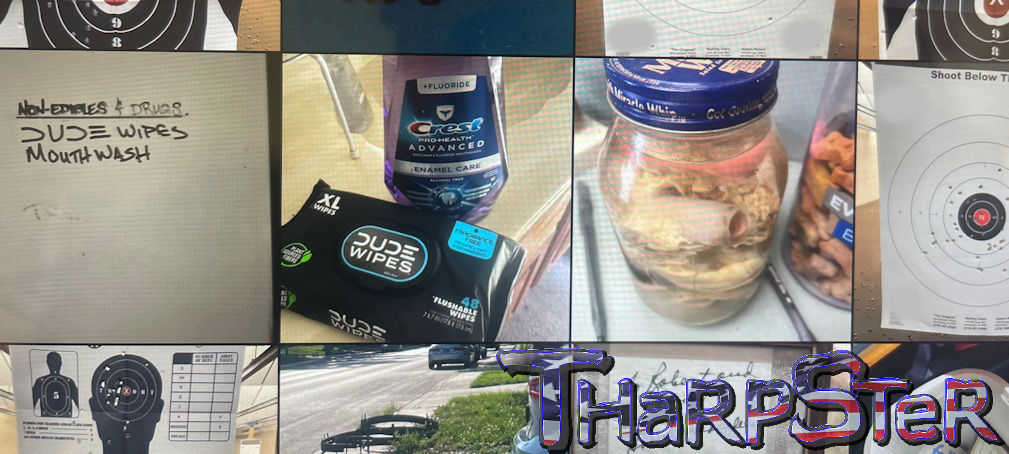Well ladies and gentlemen, I’ll say this.
We’ve gotten to a sad state of affairs when one of the most prolific purveyors of verbal brilliance takes to a vast collection of networked gadgetry to offer up valuable pointers to the telemarketing industry as a hole on how they can improve their sales and their reputation.
For the record, I used the term ‘hole’ versus ‘whole’ on purpose.
I’ve registered my phone number with the National Do Not Call Registry.
For those of you not in the know, “the National Do Not Call Registry is a list of phone numbers from consumers who have indicated their preference to limit the telemarking calls they receive.” So sayeth the Federal Trade Commission (FTC) website where I lifted that statement.
I have an app or two on my smart phone which are specifically designed to weed out unwanted calls which I can count on receiving a couple of times a day.
I have Caller ID.
Now obviously I know the Do Not Call Registry can only go so far to keep these people from calling me. I also know that the smart phone apps are only so effective about giving me a heads-up on the incoming opportunity for me to mess with the house-poor lexicon of some poor soul who could probably be making more money delivering me a pizza instead of trying to convince me to change my internet service provider.
I also know that when the Caller ID shows me a phone number that I don’t know, the decision I make to take that call is completely on me. After all, the FTC strongly suggests that we just hang up on these people and not take their calls. That can’t really be bad advice, since it’s coming from the government.
When I take those calls, one of the following will happen:
- I tell them I’m not interested, and provide instructions for them to add me to their ‘Do Not Call’ list.
- I berate them for not accessing the Do Not Call Registry before dialing my number. If they had, they wouldn’t have called me.
- I derail their entire sales pitch with subject matter completely unrelated to why they’re calling me in the first place.
- I sit there and let them listen to their whole pitch before I cut them loose. This allows me to return the favor to the caller by wasting more of their time than they have of mine by calling the first place.
For the record, the last two bullet points up there bring me about as much joy as flying my T16 in Beggars Canyon back home, dispensing with womp rats bullseye style.

Did you notice one thing that I don’t do when I get an unwanted sales call?
I don’t care how good the deal is.
I don’t care if it will generate vast savings for me in any of my monthly bills, be it for my utilities, my mobile service, or even my shaving needs.
I never purchase the product or agree to the free of charge estimate, or allow the caller in any way to mark that ill-advised call to yours truly as successful.
Now whereas the reason for that approach should be pretty darned obvious, I’ve got to surmise that maybe it’s not because I still continue to receive unwanted calls.
With that in mind, I’m going to take this opportunity now to speak directly to those in the telemarketing industry who are tasked on a daily basis with making lame-ass attempts to liberate me of my common sense, my dignity, and yes, even my money by less than honorable means. If those of you eeking out a buck in this industry will follow these rules, then you won’t find me on the other end of your phone persuading you to look up dirty words on the internet when you should be focusing on selling me a time-share.
The following rules are important ones, however I’ve going to put them in the form of a countdown for reasons which will become abundantly clear.
#5 – Do not use a Voice Response Unit (VRU).
The VRU is the device designed to keep headcount in call-centers at a minimum. It’s basically the computer that’s programmed to answer a wide variety of customer inquiries in a tier 1 level of support, before they move on to tier 2 where they can talk to a sentient bag of meat stationed in a fabric covered box.
Here’s the problem with VRUs.
When I call my bank, my insurance company, my mobile provider, my internet service provider, or my proctologist, it’s because I have an item to discuss which has transcended the information the aforementioned parties have made available to me via their website or smart phone app. If I’ve resorted to calling these people, it’s because I’ve already exhausted the tier 1 level of support measures made readily available to me, and I now need to speak to someone with a pulse. Even still, the VRU answers my call and spends several minutes offering up enough friction to me getting my questions answered that I’m usually pretty irritated by the time a fellow Earthling comes on line.
I get a call on a regular basis in which the VRU on the other end announces the following: “Hi, we want you to buy something from us. Push ‘1’ to talk to your account manager. Push ‘9’ to be added to our ‘Do Not Call’ list. Regardless of what number you push, we’re going to continue calling you.”
Knowing that consumers get irritated by a VRU when they make calls to their various service providers, you the telemarketer need to understand that when you incorporate these things into your outbound marketing plan, you’re starting off on the wrong foot.
#4 – Mind your own bidness.
Among some of the memorable intrusions into my personal life via the unwanted sales calls reside in the following:
- Are you the home owner?
- I see that Compuserv is your current internet provider.
- How much is your monthly utility bill?
- Are you a good citizen? Do you pay your bills on time and maintain a good credit score?
For those of you who call and ask these questions, I’m going to smack you on the forehead with an epiphany. The hot call room situated in that dilapidated portable building on the grounds of the abandoned asbestos factory which is paying you top dollar to market suspect products and services to me is using nefarious means to put you in contact with me. That alone should bother you.
The fact that you’re taking a deeper dive into business which is not yours is offensive. Do you really want to use offensive tactics to win today’s sales contest?
#3 – Thou shalt not spoof.
Caller ID spoofing is when a caller deliberately falsifies the information transmitted to your caller ID display to disguise their identity. Again, that’s something I lifted from a government website, this time the FCC.
Don’t forget neighbor spoofing though. This is where the caller ID reflects a number where the area code and first three digits are the same as yours. This is meant to make you think that maybe someone in your household is calling you to discuss something other than the high interest rates on your credit cards.
For those of you in the hot call room, this is one of those nefarious means your employers are using to put you in touch with me. If the people you represent had completely honest intentions about doing business with me, then the phone number appearing on my caller ID would be one that I could call back. It would be one that is associated with your employer, and not one randomly extracted from the off ramp of your alimentary canal.

If you were marketing your product by knocking on my door, would you be disguised with a pair of Groucho Marx glasses? I think not. Your use of a spoofed number automatically raises a red flag about whatever you’re selling.
#2 – Be honest with me.
More often than not, my most common responses to unwanted calls have been “Why are you calling? I’m on the ‘Do Not Call’ list.” and “I’ve told you people not to call me. Why do you keep calling me?”
I have never received a truthful response.
Let me repeat that.
I have NEVER received a truthful response.
The responses I get are one of the following:
- The caller does not engage with my
hostilityassertive nature and hangs up. - The caller persists with their sales pitch, asking for just a minute of my time without bothering to answer the question.
- The caller insists that they’ve never called me before. They get a little baffled when I ask them the questions they’re supposed to be asking me. It’s almost as if I’ve heard that line of questioning before.
Pay attention caller, because this tip will earn you TharpSter points when you call me. When I ask you either of my stock questions, give me a straight answer. Tell me that your outfit has chosen nefarious means in which to market suspect products and services to me. In response, I will ask you how you feel about working for an employer who has chosen less than honorable means to carry on their business. While you ponder that, I will suggest you pursue other means of income, instruct you never to call me again, and then hang up on you.
#1 – Comply with the Do Not Call provisions of the Telemarketing Sales Rule.
Okay telemarketers, get your face really close to the monitor and pay attention.
Up until now, the previous four instructions have basically served as filler and fluff for the one rule that you should not ignore. In fact, if you incorporate one specific rule into your outbound marketing model, you don’t even have to use the four rules I’ve outlined to this point.
Access the National Do Not Call Registry and use it to insure you aren’t calling people who don’t want to be called.
Data for the first five area codes is free to you, and it’s $63 an area code after that up to a maximum annual fee of $17,406. Those numbers are as of March, 2019 and were captured from the FTC website.
If you do this one simple thing, you will legitimize your efforts and not have to put up with assholes like me who you shouldn’t have called in the first place.
That’s it people. Go legit with your business practices and you’ll learn how to live with yourself and sleep at night.
Now if you’ll excuse me, I have a phone call to take.







